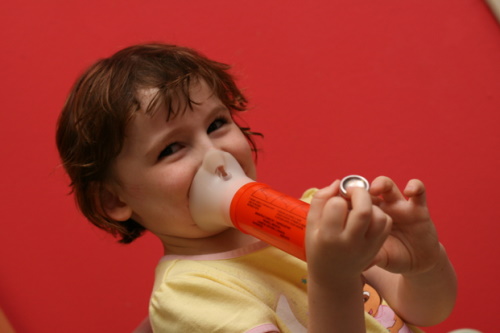Introduction
In any kind of emergency circumstance, the capacity to assess a casualty's responsiveness can mean the difference between life and death. Recognizing how to execute this crucial analysis is necessary for anybody involved in Basic Life Support (BLS) training. This post looks into The Relevance of Inspecting Responsiveness: A BLS Essential, discovering its value details on CPR courses in Salisbury within the broader context of basic vs advanced life support practices, hospital codes and methods, and much more.
Table of Contents
Understanding Responsiveness in BLS- What is Responsiveness? Why is it Crucial in Emergencies?
- Overview of Basic Life Support Transitioning to Advanced Life Support
- Step-by-Step Guide Common Blunders to Avoid
- Signs of No Breathing What to Do Next
- Understanding AEDs When to Use an AED
- Benefits of BLS Training How to Get Certified
- The Significance of Teamwork Recommended Compression Rates
- Techniques for Staying Calm The Role of Calmness in Efficient Response
Understanding Responsiveness in BLS
What is Responsiveness?
Responsiveness refers to an individual's ability to respond to stimuli, such as verbal commands or physical touch. In a clinical emergency situation, assessing responsiveness assists identify the urgency and kind of treatment required.
Why is it Vital in Emergencies?
Checking responsiveness permits -responders to swiftly assess a victim's problem, guiding subsequent activities such as calling for help or carrying out mouth-to-mouth resuscitation. In essence, it establishes the phase for all more interventions.
Basic vs Advanced Life Support
Overview of Basic Life Support
Basic Life Support (BLS) includes essential techniques focused on sustaining life until innovative clinical aid arrives. It consists of checking responsiveness, carrying out CPR, and using an Automated External Defibrillator (AED).

Transitioning to Advanced Life Support
Advanced Life Support (ALS) entails more sophisticated medical interventions that educated professionals conduct, such as administering medications and advanced respiratory tract monitoring techniques.
How to Examine Responsiveness
Step-by-Step Guide
Approach the specific calmly. Gently touch their shoulder and speak noisally yet clearly. Observe their feedback; if there's no reaction, wage further assessments.Common Blunders to Avoid
- Failing to examine breathing after evaluating responsiveness. Not asking for emergency situation services immediately if there is no response.
Identifying No Breathing
Signs of No Breathing
In some situations, a person might be unresponsive yet still taking a breath inadequately or not whatsoever. Search for:
- Absence of breast movement. No audible breaths.
What to Do Next
If you identify no breathing:

Public Defibrillator Usage
Understanding AEDs
An Automated External Defibrillator (AED) is a portable device designed to examine heart rhythms and provide an electric shock when necessary.
When to Make use of an AED
Use First Aid Course in Salisbury an AED when:
- The person is less competent and not breathing. Medical professionals are on their means however prompt activity is required.
BLS Qualification Importance
Benefits of BLS Training
Obtaining BLS accreditation furnishes people with crucial skills needed during emergency situations, boosting their self-confidence in responding effectively.
How to Obtain Certified
Certification training courses are readily available via numerous companies such as the American Heart Organization (AHA) or Red Cross-- select one that fits your schedule!
Taking Turns on Compressions
The Value of Teamwork
When numerous -responders are present, taking turns on compressions helps prevent exhaustion and guarantees top quality upper body compressions throughout the resuscitation process.
Recommended Compression Rates
The perfect compression rate throughout CPR is 100-120 compressions per min; guaranteeing this uniformity can significantly improve survival chances.
Maintaining Composure Throughout Emergencies
Techniques for Staying Calm
Staying calmness during a situation is important-- not just for your very own efficiency but also for those around you that may be seeking management during chaos.
Take deep breaths before approaching the situation. Focus on jobs rather than feelings; this will certainly aid you remain centered.The Role of Composure in Reliable Response
Your attitude can dramatically influence just how others react-- preserving composure encourages synergy and infuses self-confidence amongst bystanders aiding with care.
Conclusion
In summary, recognizing exactly how and why we examine responsiveness creates the backbone of effective BLS training and interventions during emergencies. Whether you're browsing fundamental vs sophisticated life support scenarios or utilizing public defibrillators properly, every 2nd matters when lives go to stake-- making expertise concerning these procedures invaluable.
FAQs
Q1: What should I do if someone is unresponsive?
A1: Check their responsiveness by gently tapping them and screaming their name; if they are unresponsive, call emergency solutions immediately.
Q2: Exactly how does monitoring responsiveness differ from other assessments?
A2: Checking responsiveness especially evaluates a person's recognition level while other assessments may involve inspecting important signs or breathing patterns.
Q3: Is BLS accreditation necessary for everyone?
A3: While not obligatory for everybody, getting BLS qualification can encourage you with vital abilities that could conserve lives in emergencies.
Q4: Can I use an AED on somebody who shows indications of breathing?

Q5: Just how usually must I practice my CPR skills?
A5: It's suggested to revitalize your CPR skills with routine training sessions at the very least every 2 years or quicker if you really feel uncertain regarding your abilities.
Q6: Does keeping composure really effect emergency outcomes?
A6: Absolutely! Composed -responders often tend to act more efficiently which positively affects both team characteristics and patient outcomes.
By focusing on the relevance of inspecting responsiveness within Basic Life Support training structures, we accept our duty as prospective lifesavers-- outfitting ourselves with expertise that can change minutes of dilemma into chances for hope and recovery!